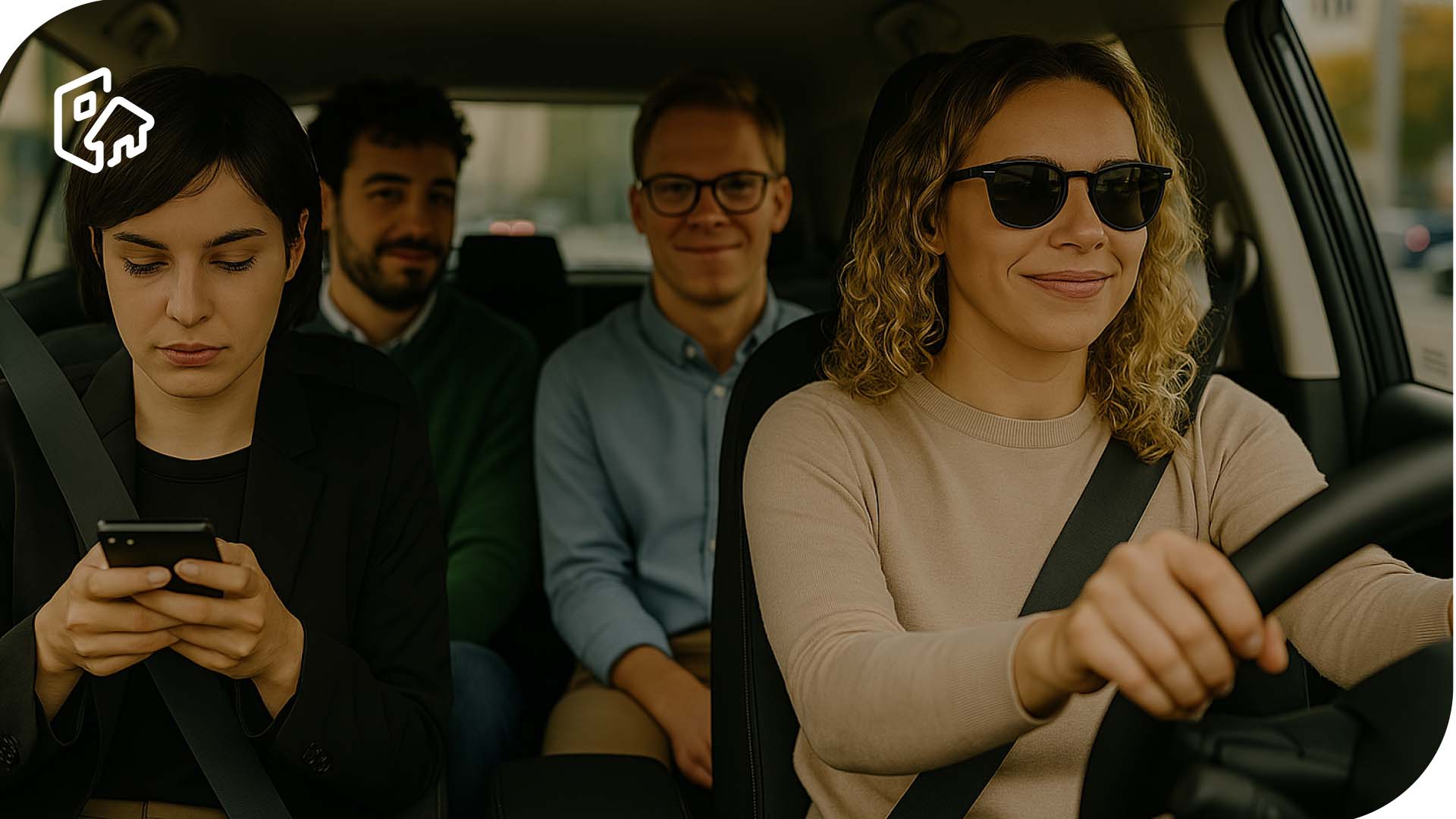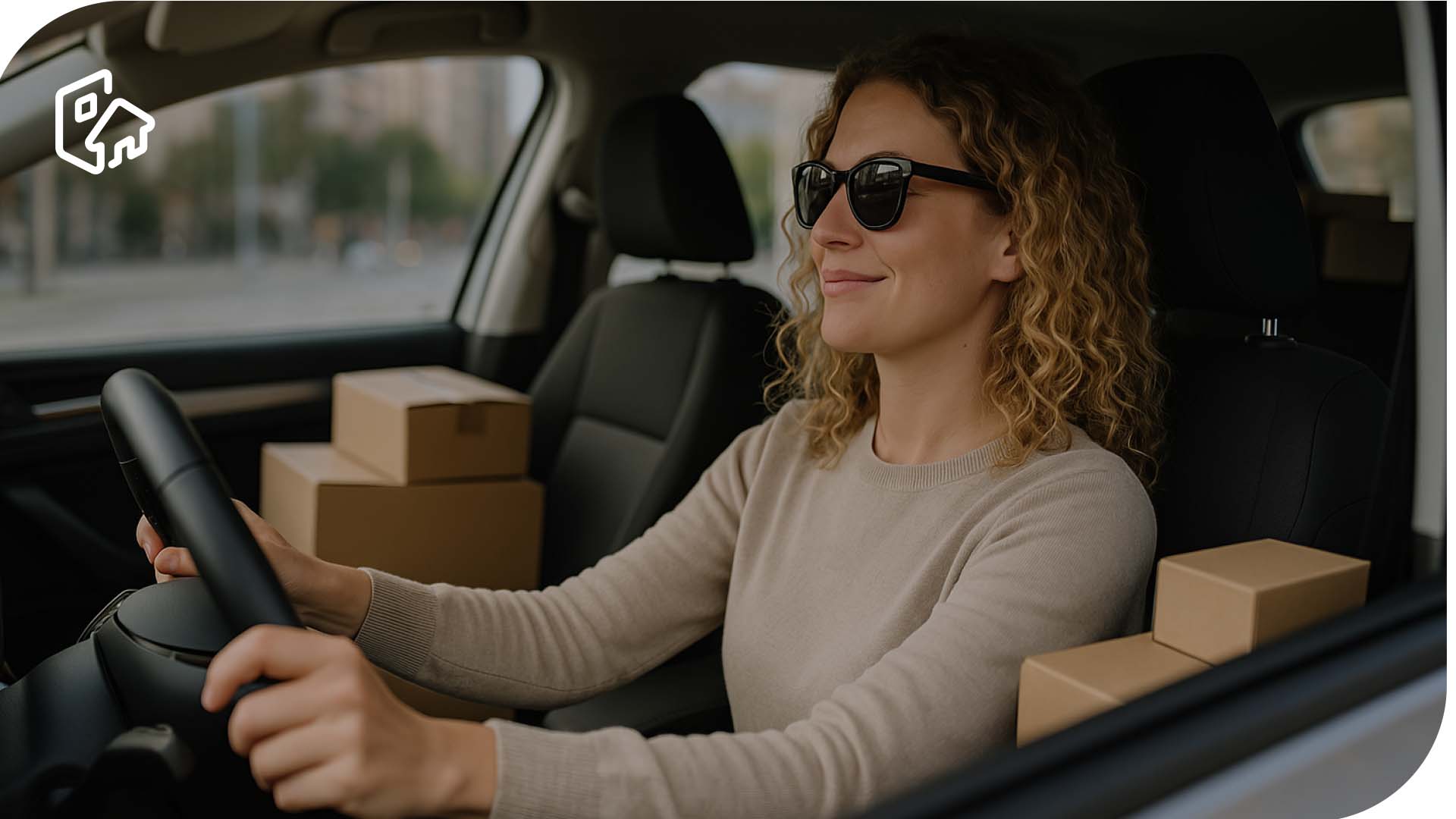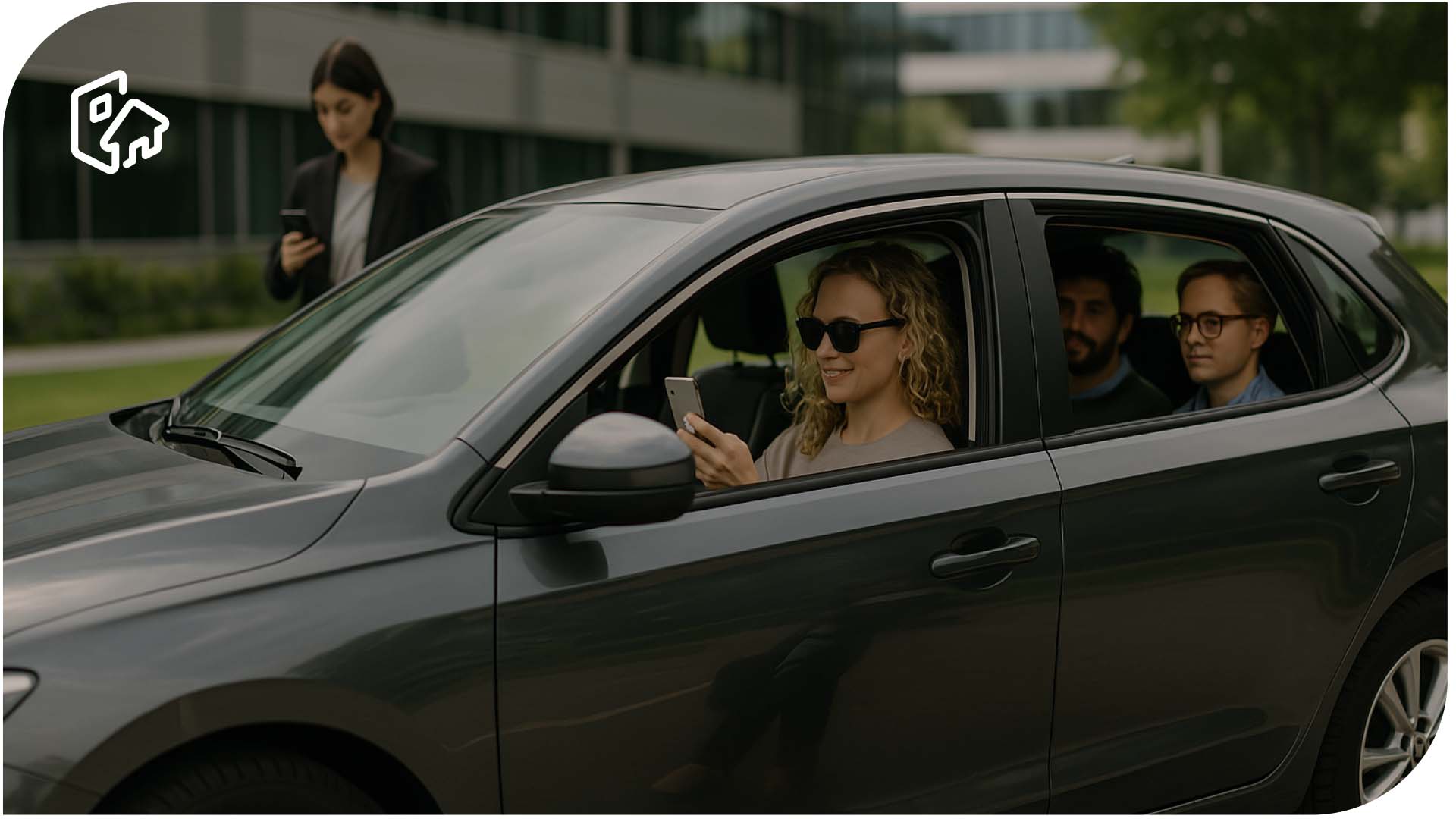In recent years, shared mobility models have gained prominence in our cities. Whether for environmental, economic, or efficiency reasons, more and more people are choosing to share rides instead of using private vehicles individually. In this context, two models stand out: carpooling and carsharing.
Both offer a sustainable and practical alternative to traditional car use, but they have different approaches and purposes. In this article, we focus on explaining the key differences between carpooling and carsharing, with a clear emphasis on the advantages and specific uses of each model.
What is Carpooling?
Carpooling, also known as ride-sharing between individuals, involves sharing a car journey with several people who are traveling a similar route. Typically, one of the passengers is the driver and owner of the vehicle, while the others are riders who contribute to the cost of the trip, such as fuel or tolls.
This model is especially common for daily commutes to work, universities, or long-distance trips between cities. Digital platforms have significantly simplified this practice by quickly and securely connecting users with similar travel routes.
What stands out most is that carpooling is not a professional transport service but rather a collaboration between private individuals, making it a very affordable and sustainable option.
Example of Carpooling:
An employee who lives on the outskirts of Madrid and works at a company in the city center shares his car every morning with three coworkers who take the same route. They split the cost of fuel and take turns driving on different days.
What is Carsharing?
Carsharing, on the other hand, is a service that allows users to rent a vehicle for minutes, hours, or days without the need to own one. This model is managed by companies or platforms that provide users with a fleet of cars distributed across various points in the city.
Users can reserve a nearby car using their smartphone, use it for as long as they need, and then return it to a designated area. It’s an ideal option for those who occasionally need a car but don’t want the costs and responsibilities of ownership.
Unlike carpooling, carsharing does not involve sharing the ride with other people. It’s an individual use of the vehicle, though shared by many users at different times.
Example of Carsharing:
Someone living in Barcelona needs to make a large purchase at IKEA. They use their carsharing app to reserve a car for two hours, pick it up near their home, complete their shopping, and return it to a parking area in the city center.
Carpooling vs Carsharing: a comparison of shared mobility models
Both models share the goal of promoting smarter mobility, reducing urban congestion, and helping to lower pollutant emissions. However, their differences are crucial when deciding which transportation option is best suited for each situation.
Advantages and disadvantages of Carpooling
Carpooling offers multiple benefits that make it one of the smartest and most sustainable ways to travel. Firstly, it’s a cost-effective option, as passengers contribute to the journey’s expenses (such as fuel or tolls), allowing the driver to significantly reduce their commuting costs. This model is ideal for frequent routes, such as daily trips to work or school. Additionally, it has a strong positive environmental impact: by sharing vehicles, the number of cars on the road is reduced, leading to lower pollution levels and less urban congestion.
Another noteworthy benefit is its social value. Carpooling encourages interaction among people with similar routes or interests, fostering new connections—especially in the workplace. Many companies are already promoting internal platforms to connect employees, making commuting more comfortable, economical, and collaborative.
However, carpooling also has some drawbacks to consider. One of the main limitations is the lack of schedule flexibility, as users must coordinate meeting points and times with others. This can be a disadvantage compared to more autonomous options. Additionally, there might not always be matching routes available in the area or at the desired time, meaning availability can be limited without an active platform or a large user community. Finally, sharing a ride with others results in a loss of privacy compared to driving alone—something that might be uncomfortable for some users, especially during long commutes or when feeling tired.
Advantages and disadvantages of Carsharing
One of the main advantages of carsharing is the high level of flexibility it offers. Users can access a car at any time without owning one, making it a practical solution for occasional trips. There’s no need to worry about maintenance, insurance, or taxes, as these are all included in the rental fee. Most platforms allow users to manage the entire process through a mobile app, which greatly simplifies the experience. For many people living in large cities, carsharing is a modern and efficient alternative to owning a private vehicle—especially for specific needs like moving house, doing a big shop, or taking a short weekend trip.
However, carsharing also has its drawbacks. One of the most obvious is that it can become expensive if used frequently. Since it’s a time-based rental model, longer usage periods can make the cost higher than other options like public transport or even carpooling. Additionally, carsharing services are mostly limited to densely populated urban areas, so finding an available car in suburban neighborhoods or rural zones can be more difficult. During peak times, such as weekends or special events, vehicle availability may be limited, and wait times may increase. Furthermore, although the car is shared among many users, the ride itself is individual—meaning it doesn’t reduce the number of vehicles on the road as effectively as carpooling does.
Carpooling and Carsharing vs. Private car ownership
Comparing these shared mobility models with the use of a traditional private vehicle highlights the many benefits of shared transportation. Owning a car comes with a series of significant fixed costs: insurance, maintenance, taxes, fuel, and often parking.
Both carpooling and carsharing help drastically reduce these expenses by transforming the car into a shared resource. This shift not only results in savings but also contributes to improved urban space usage and a significant reduction in environmental impact.
Additionally, privately owned cars are typically idle more than 90% of the time. Sharing a vehicle—whether with other users through carpooling or via a shared fleet in carsharing—represents a much more efficient way to utilize resources.
Which model is right for you: Carpooling or Carsharing?
Choosing between carpooling and carsharing depends on your personal needs, lifestyle, and travel habits. If you’re looking for a cost-effective, eco-friendly, and collaborative option, carpooling is likely your best choice—especially if you take frequent trips and want to share them with others.
On the other hand, if you need autonomy for occasional trips and prefer not to rely on fixed schedules or routes, carsharing may be the more convenient alternative.
In any case, both models represent a step toward more sustainable mobility and away from intensive private car use. The key is to understand which option best fits your commuting habits.
Conclusion
The world of transportation is evolving, and models like carpooling and carsharing are leading this transformation. Far from being passing trends, they are real, effective solutions for improving urban mobility, reducing costs, and helping care for the planet.
At Hybo, we especially advocate for carpooling as a way to transform daily commutes and empower organizations to be part of the change.
Are you ready to start sharing?
















